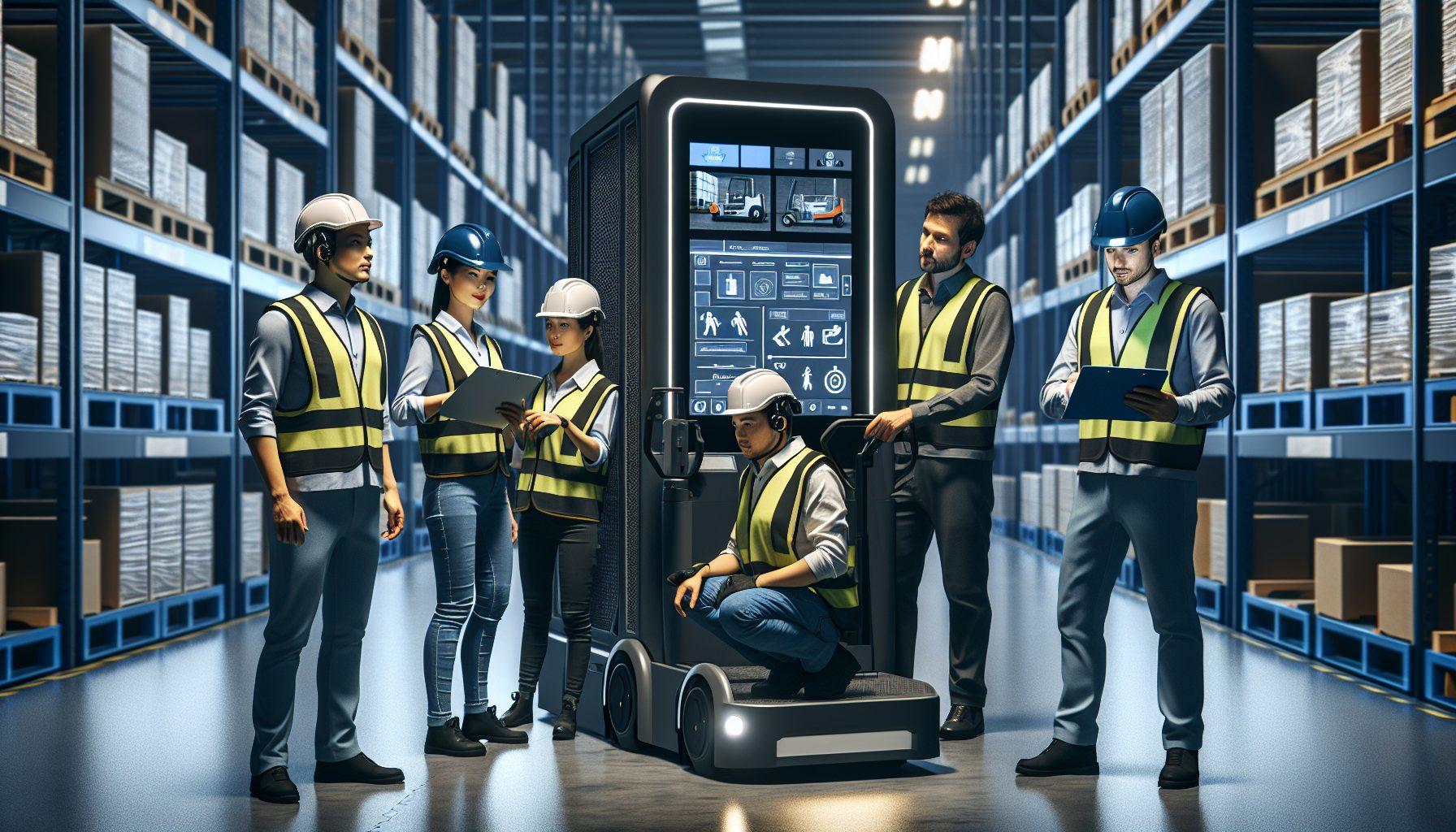Warehouse operations are a crucial aspect of any business involved in storing and distributing products. And as technology continues to advance, companies are constantly seeking ways to improve safety, productivity, efficiency, and cost-effectiveness within their warehouse operations. One innovative solution that has gained significant attention in recent years is the use of Automated Guided Vehicles (AGVs).
The Rise of AGVs in Warehousing
AGVs are autonomous vehicles that are designed to perform material handling tasks within a warehouse or distribution center. These vehicles are equipped with sensors, cameras, and other advanced technology that allow them to navigate through the warehouse environment without the need for human intervention.
One of the main advantages of using AGVs in warehouse operations is the improvement in worker safety. In a traditional warehouse setting, workers often have to manually transport heavy loads, which can lead to musculoskeletal injuries. AGVs eliminate the need for manual lifting and carrying, reducing the risk of injuries and creating a safer working environment for warehouse employees.
Aside from enhancing safety, AGVs also contribute to increased productivity within the warehouse. These vehicles can work around the clock, without the need for breaks or rest periods, ensuring a continuous flow of operations. AGVs can efficiently transport goods from one location to another, reducing the time required for each task and increasing overall productivity.
Moreover, AGVs are highly accurate in their operations. They are programmed to follow predetermined routes and can navigate through narrow aisles and tight spaces with precision. This eliminates the risk of human error and minimizes the chances of accidents or damaged products caused by incorrect handling.
AGVs also offer significant cost savings for warehouse operations. By automating material handling tasks, companies can reduce their reliance on manual labor, potentially reducing labor costs. AGVs can carry out tasks in a more streamlined and efficient manner, optimizing the use of resources and reducing wastage.
The Impact on Warehouse Worker Roles
With the implementation of AGVs, the roles of warehouse workers may undergo a transformation. Instead of focusing on manual material handling tasks, workers can be trained to operate and manage the AGV fleet. This shift in responsibilities can lead to increased job satisfaction and professional development for warehouse employees.
Warehouse workers can be trained to monitor the AGVs, ensure that they are operating efficiently, and troubleshoot any technical issues that may arise. By taking on these new roles, workers can enhance their technical skills and become proficient in operating advanced warehouse optimization technologies such as AGVs.
Additionally, workers can work collaboratively with AGVs, further improving productivity within the warehouse. They can provide assistance during peak periods or in complex tasks that may require human intervention. This collaboration between workers and AGVs creates a harmonious and efficient working environment, where both humans and machines can complement each other’s strengths.
Implementing AGVs in Warehouse Operations
Deploying AGVs in warehouse operations requires careful planning and consideration. It is essential to assess the specific needs and requirements of the warehouse to determine the appropriate AGV solution.
Firstly, it is crucial to evaluate the layout and design of the warehouse. AGVs are designed to navigate through predefined routes, so the warehouse should have a well-defined and clear path for the AGVs to follow. This may require modifications to the warehouse infrastructure, such as installing navigation markers or guide rails.
Secondly, companies need to consider the types of goods and materials being handled in the warehouse. AGVs come in various sizes and configurations, and it is essential to select the right AGVs that can handle the specific materials efficiently and safely.
Lastly, proper training and education for warehouse workers are key to successful AGV implementation. Workers need to be familiar with the operation and maintenance of AGVs, as well as the safety protocols associated with working alongside these autonomous vehicles. Ongoing training and support should be provided to ensure workers can adapt to the new technology effectively.
With proper planning, implementation, and worker training, AGVs can bring significant improvements to warehouse operations. They enhance safety, productivity, efficiency, and cost-effectiveness, making them an invaluable asset for businesses in the ever-evolving world of warehousing.
If you are interested in exploring AGV deployment for your warehouse, HCO Innovations can provide you with the expertise and solutions you need. Check out their warehouse AGV deployment services to learn more about how they can help optimize your warehouse operations.

